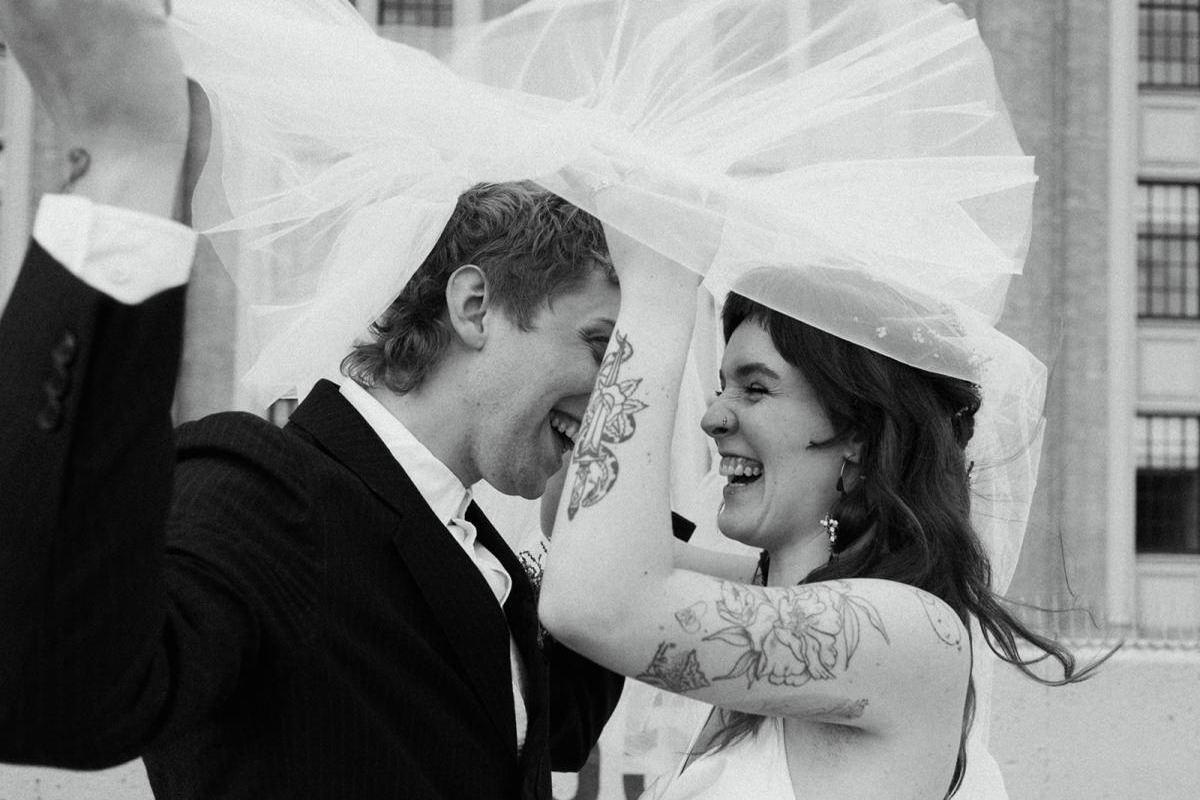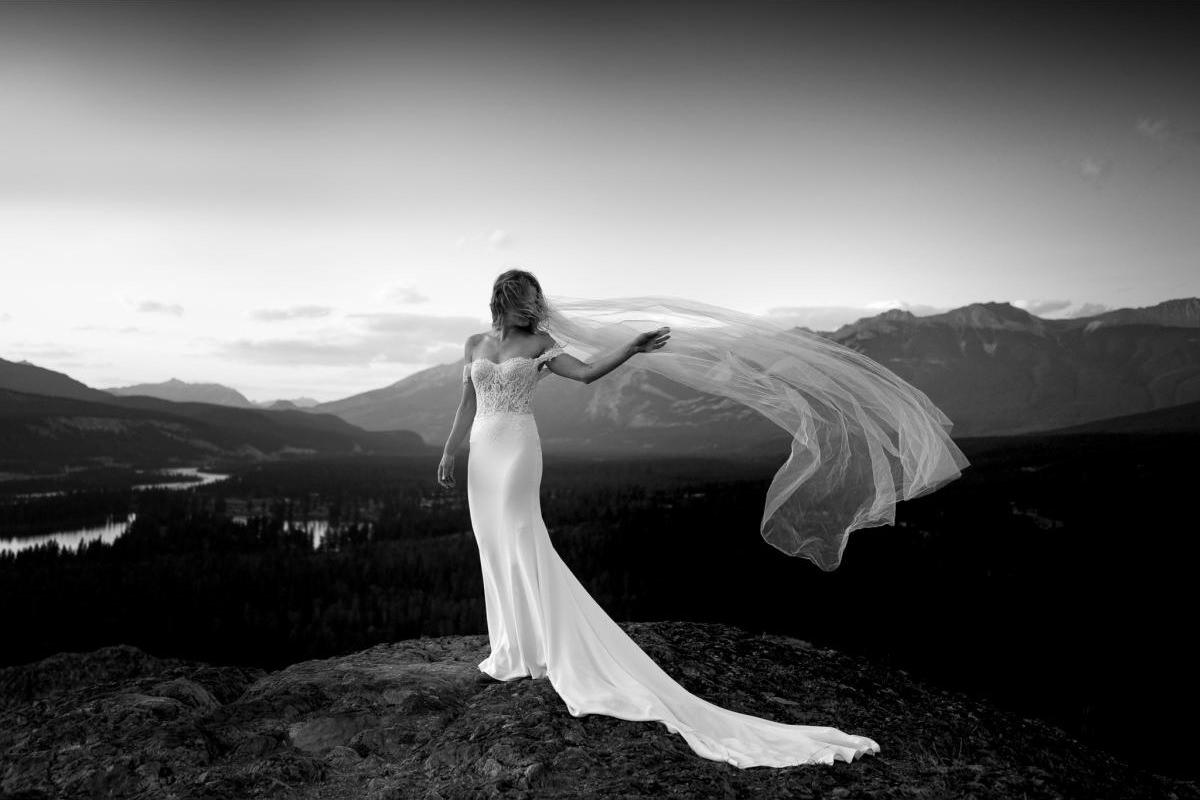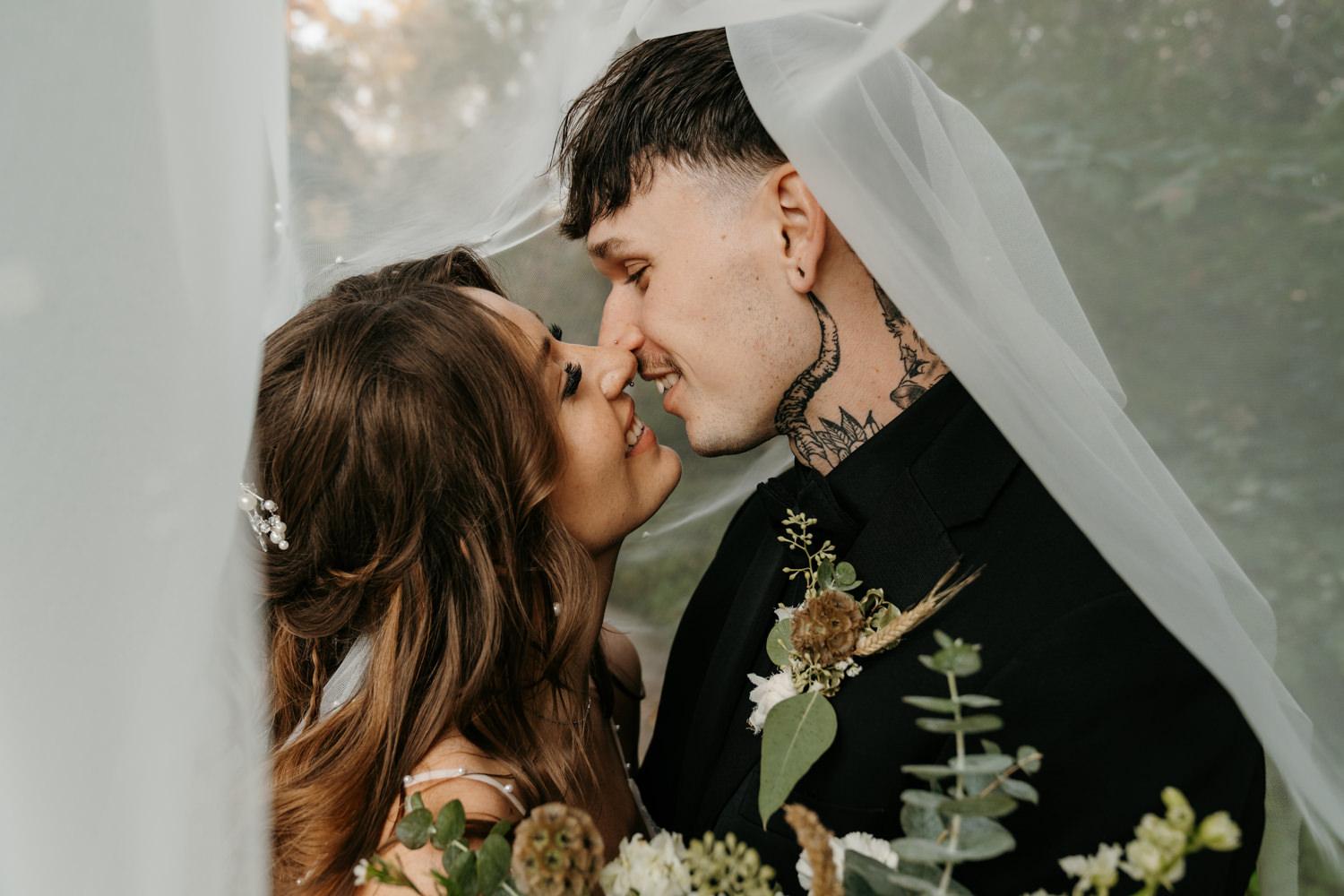Once used to ward off evil and conceal identity, the wedding veil has shifted from superstition to fashion—and from submission to self-expression.
The wedding veil has long been a powerful symbol. Draped in mystery, modesty, and meaning, it has adorned brides across cultures for thousands of years. But while some still see it as a romantic or traditional element, others view it as outdated—or choose to reinterpret it entirely.
In Canada today, the veil can be a nod to heritage, a bold fashion statement, or simply skipped altogether. Here's how its role has evolved.

Ancient Origins: Veils as Protection and Power
The earliest veils were not about modesty—they were about protection and symbolism.
- In ancient Rome, brides wore flame-colored veils (called flammeum) to ward off evil spirits.
- In Greece, veils symbolized a mystical transformation from maiden to wife.
- In Mesopotamia and Assyria, veils were associated with class—only noblewomen could wear them.
In these early societies, the veil was not optional. It marked status, identity, and divine protection.
Religious Roots and Cultural Expectations
By the Middle Ages, the veil took on religious significance in Christian Europe.
- Christian doctrine viewed the veil as a symbol of purity and submission, especially when combined with white attire.
- In Jewish weddings, the badeken (a pre-ceremony veiling) remains a moving moment, symbolizing inner beauty and love.
- In Islamic weddings, the hijab, abaya, or dupatta may be worn for reasons of modesty, spirituality, and cultural tradition.
For many cultures, head coverings remain sacred, while for others, the veil has become more symbolic or optional.
The Victorian Era and the Rise of Modesty Aesthetics
Queen Victoria didn’t just make white popular—she also brought back the full veil.
In the 19th century, veils became longer, sheer, and intricately detailed, often made from Brussels lace or Honiton lace, echoing royal and upper-class aesthetics.
This era solidified the veil as a romantic tradition in Western culture—but its meanings around virginity and modesty were also used to reinforce gender roles.

20th Century Shifts: From Uniformity to Individuality
- 1920s–30s: Veils got shorter, worn with Juliet caps and flapper-style dresses.
- 1950s: The “princess bride” look reigned supreme—full veils, cathedral lengths, and dramatic silhouettes.
- 1960s–70s: Mod brides often wore no veil at all, or simple flower crowns.
- 1990s–2000s: The veil experienced a resurgence with full-length drama and couture designs.
Every generation reinterpreted the veil according to its values, aesthetics, and cultural norms.
Today: A Symbol of Choice, Not Expectation
In Canada’s diverse wedding landscape, the veil is no longer required—or even expected.
Modern options include:
- Minimalist fingertip veils or elaborate cathedral styles
- Birdcage veils for vintage flair
- Capes, hoods, or no veil at all
- Cultural headwear or floral crowns
Some brides wear veils for family or religious reasons. Others wear them as a nod to tradition—or for the photos. Still others reject them completely, finding their meaning no longer resonates.
How Photographers Frame the Veil
The veil offers photographers a chance to play with texture, movement, and light.
- A soft veil blowing in the wind creates motion.
- A sheer veil over the couple’s faces evokes intimacy and nostalgia.
- A veil being removed can symbolize transition—from ritual to celebration.
Photographers often use veils to shape the visual tone of the ceremony, portraits, and storytelling.

Related Reading in the History of Weddings Series:
- The History of the Wedding Dress
- The History of Wedding Fashion (Beyond the Dress)
- The History of Wedding Symbols and Colours
- Wedding Traditions from Around the World
Continue Planning Your Wedding
Ready to dive into the details? How to Find the Perfect Wedding Photographer: The Ultimate Guide to Making the Right Choice